The Royal Academy Summer Exhibition is the largest open contemporary art exhibition in the world, showing a mixture of work in different mediums by new and established artists. Innovation News stopped by on the last weekend of the 2015 show to see what caught our eye.
In addition to being a fantastic place to introduce yourself to the work of new and established artists. By visiting the summer exhibition, and possibly investing in a piece or two, visitors help to raise funds for the Royal Academy schools and ensure that the tuition remains free.
Each year the summer exhibition is curated by a group of Royal Academicians, this year the exhibition co-ordinator was Michael Craig-Martin RA. Bringing his extensive knowledge of colour to the halls of the royal academy. The walls of the three main galleries were painted with bright hues, creating a visual break from the sheer number of pieces on display, as well as providing visual sign posts, enabling the wandering visitor to immediately gage if they had been in that room before. As is tradition at the summer exhibition works flowed through and out of the halls. The first introduction to the show is the large sculptural installation The Dappled Light Of The Sun by Conrad Shawcross RA, dominating the main courtyard and creating an interesting juxtaposition to the classical architecture. At the entrance to the building, Zobop by Jim Lambie, a vibrant interaction with the environment, lead visitors up the stairs and to the entrance of the main galleries. The interior layout was slightly different than in previous years. Some of the rooms having been rearranged, the print spaces seemed to have a higher billing this time. The layout on the walls in each room always seems to be a challenge, over 1,000 pieces of work in various sizes and mediums throughout the show. A visit to the royal academy summer exhibition can provide inspiration for hanging any art show. This year, as in many others, the pieces were stacked high; guiding the eye up and highlighting the architecture of the historic space but reaching well beyond a standard viewing distance.
The other breaks in the pace of the show were two rooms dedicated to individual artists who had been invited to exhibit. The Small Western Room at one end of the exhibit was dedicated to the work of William Kentridge RA, a selection of mixed media work on pages of dictionaries and handmade papers. This was balanced by the final room of the galleries, dedicated to the work of Tom Phillips RA, showcasing a work in progress since the 1960’s; A Humument, mixed media alterations turning each page of a Victorian novel into its own work of art.
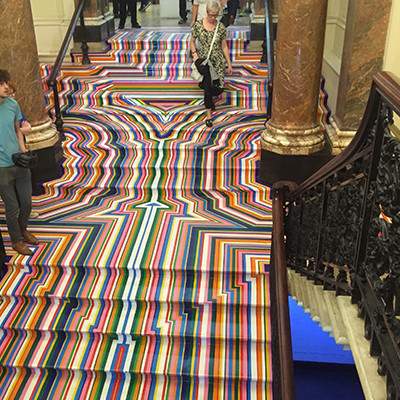
Zobop by Jim Lambie, Coloured Vinyl Tape
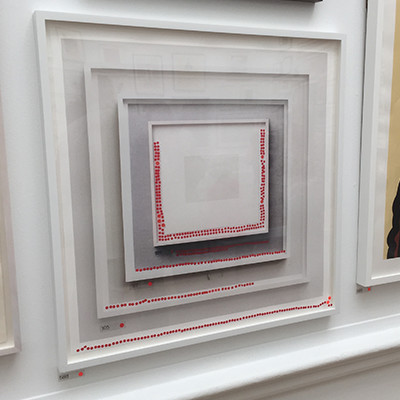
Stolen Thunder III by Cornelia Parker RA, Digital Print
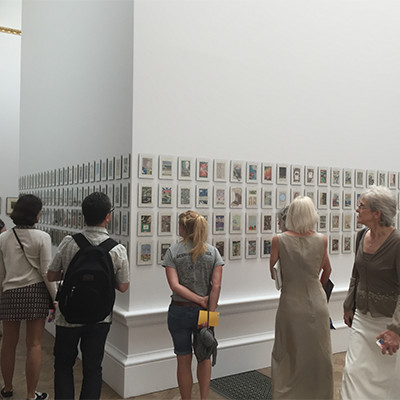
Selection Of Pages From A Humument by Tom Phillips RA, Mixed Media on Book Pages
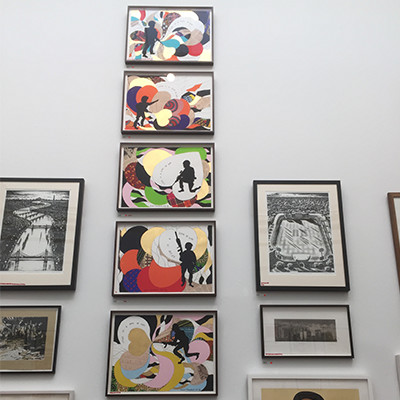
Love In A Time Of War 1-5 by Yinka Shonibare RA, Digital Prints and Gold Leaf
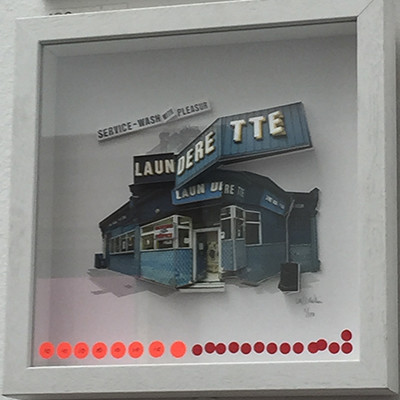
Launderette by Dominic Mallin and Laura McEwen, Mixed Media Collage
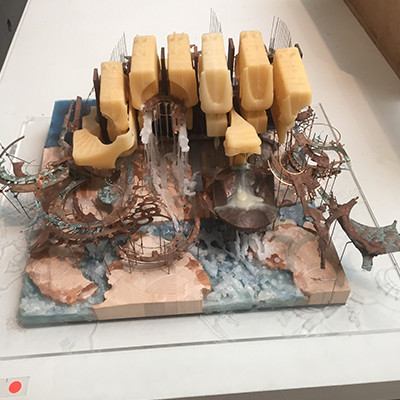
Ivera Museum Of Natural History (Scale Model) by Kirsty Williams, Beeswax, Parafin Wax, Electroplated Bronze and Limewood
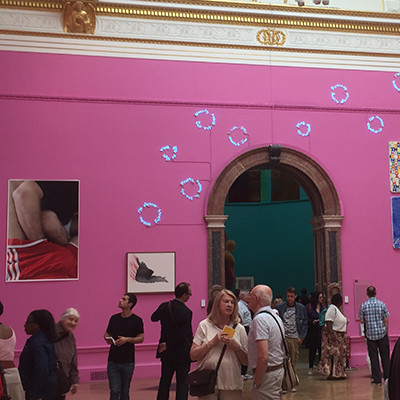
Homo Bulla (Man-is-a-bubble) by Michael Landy RA, Neon and Arms and Legs by Wolfgang Tillmans RA, Inkjet Print and Clips
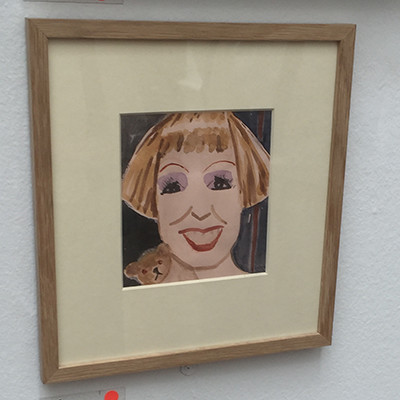
Grayson and Measles by Una Stubbs, Watercolour
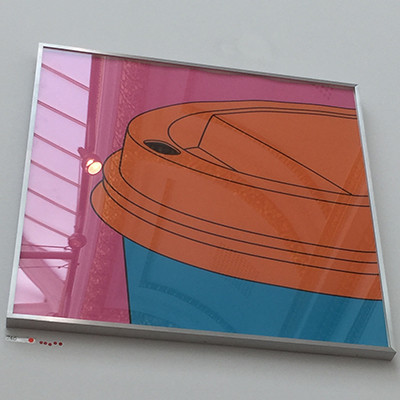
Fragment Of coffee Cup by Michael Craig-Martin RA, Screenprint
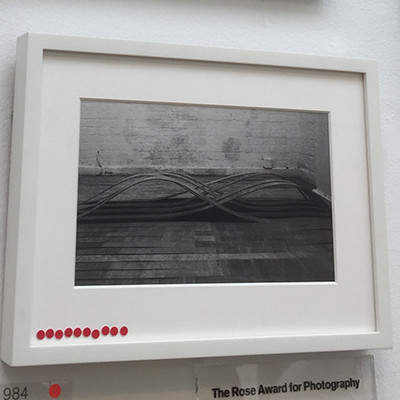
Floor Studies by Caroline abbotts, Giclée Print on Watercolour Paper
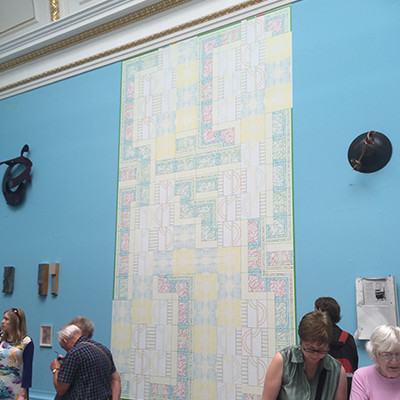
Between Us by Jacqueline Poncelet, Wallpaper
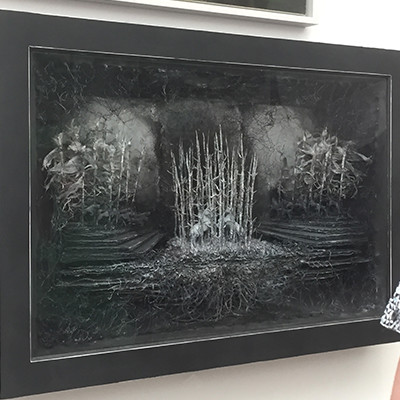
Asylum by Cathy de Monchaux, Copper Wire, Medical Plasters, Pigment, Feathers and Silk
If you are not visiting an exhibition like this to buy it can certainly influence your perception in other ways. Taking inspiration from the techniques on display as well as looking at how each piece is presented in its frame, and how the selection is shown as a whole. A visit can also serve as a reminder to keep working at your art career, the mixture of invited RA’s on display with the number of open submissions selected is a constant reminder to continually hone your skills and build a network of peers in the industry. To take a chance and see where it takes you – the selection committee is not given the names of the artists, they judge only on the work submitted. It is so difficult to come up with a short list but shown above is a selection of works that caught our eye for various reasons, you can see a full list of works and pick your favourites from the list of exhibits here.
As an open exhibition, any artist is eligible to submit up to two pieces of work for display at the Royal Academy. If you are interested in submitting works for the 2016 Summer Exhibition, keep an eye on the Royal Academy website, details of how to submit will be announced in January 2016.
Did you visit the royal academy summer exhibition this year? Tell us your thoughts in the comments section below.


Leave A Comment